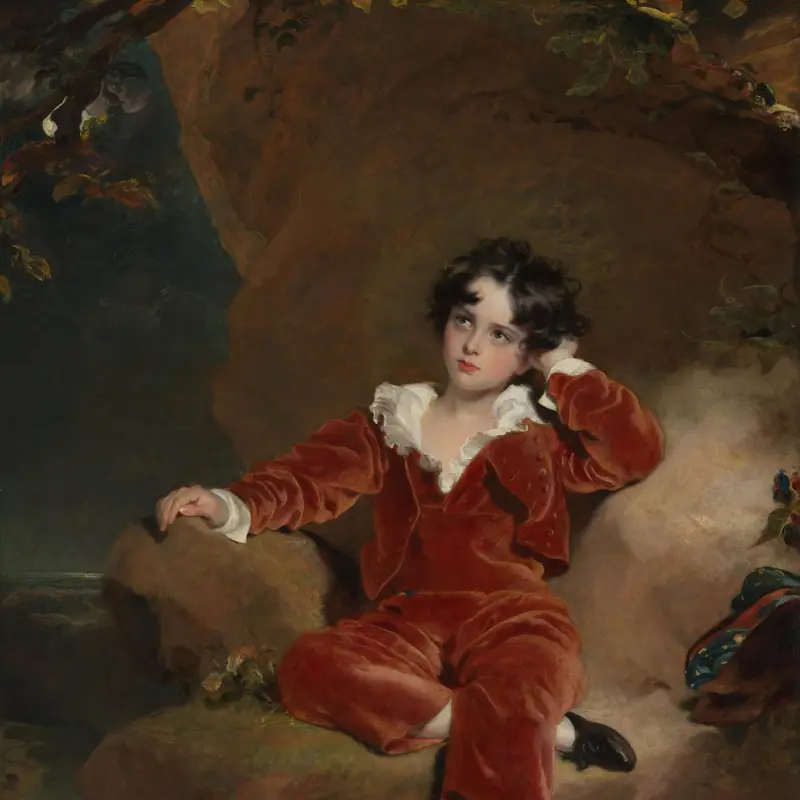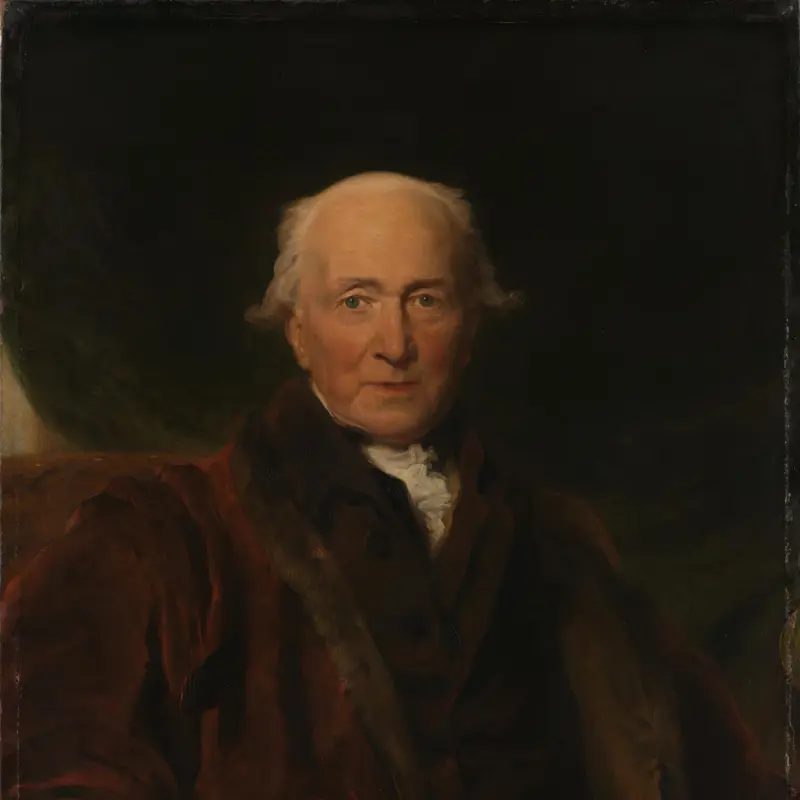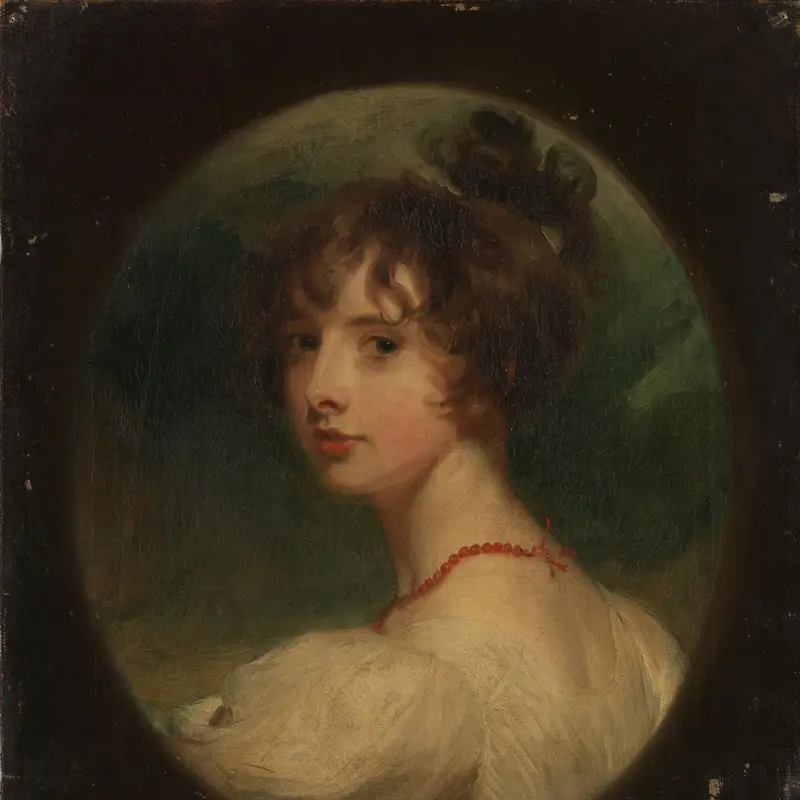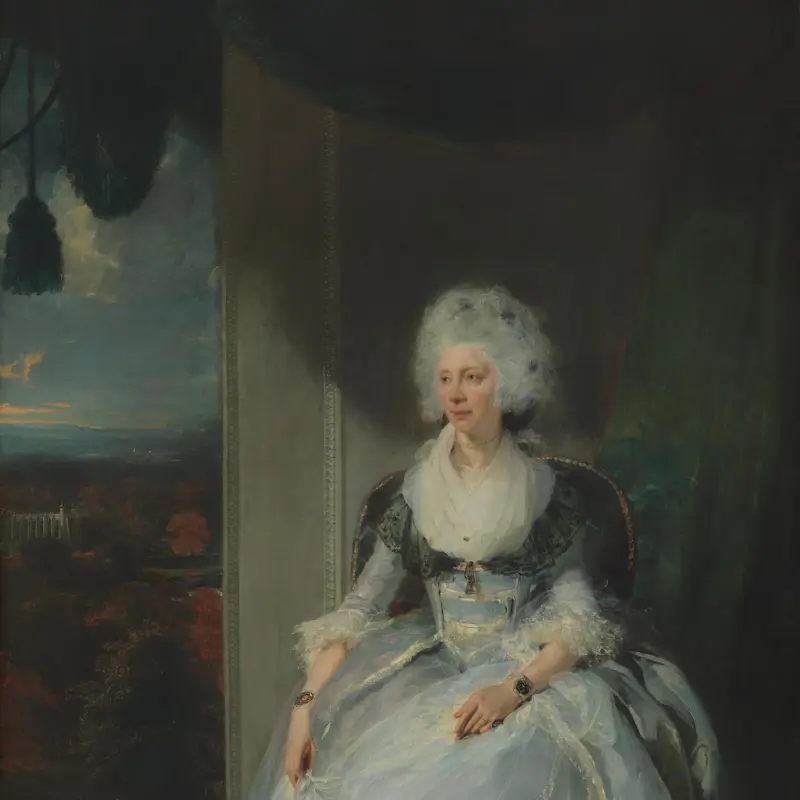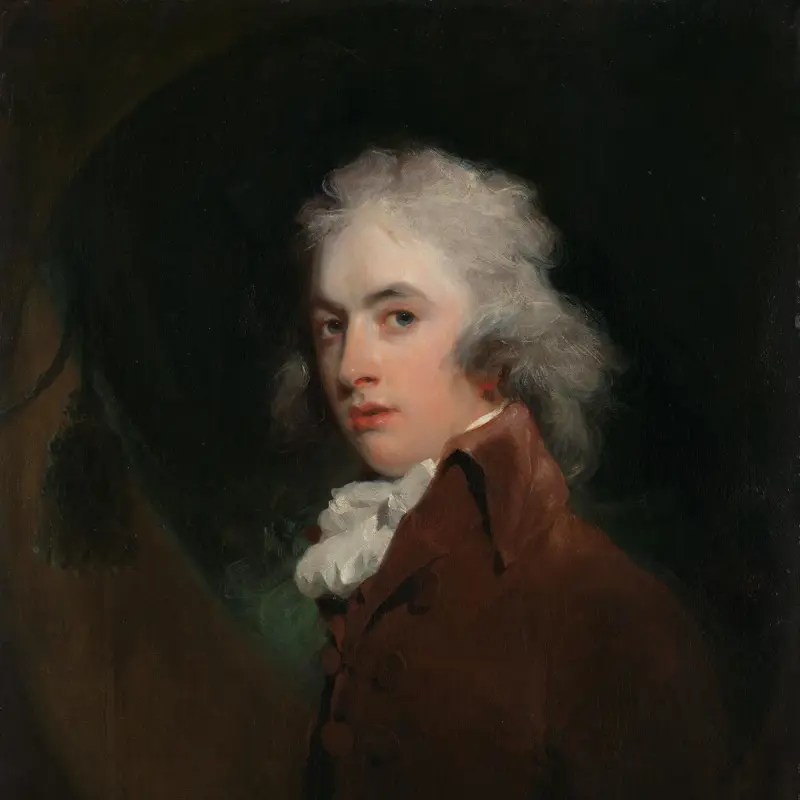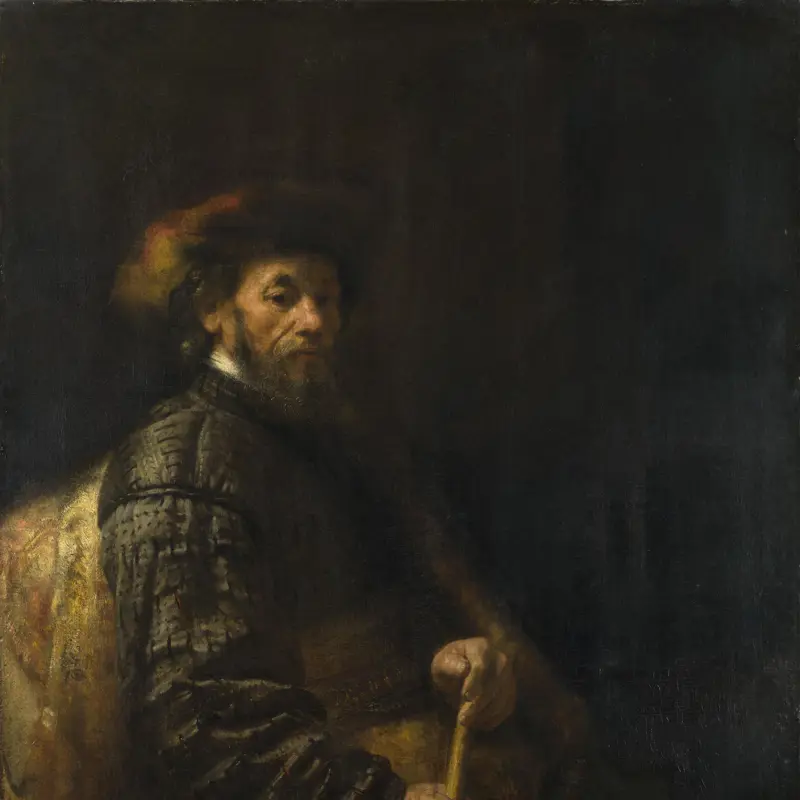Lawrence was the leading British portrait painter of the early 19th century, portraying most of the important personalities of the day in his polished and flattering style. He was a child prodigy and largely self-taught; at the age of 10 he was making accomplished portraits in crayon. He was influenced by Sir Joshua Reynolds during his youth; his style developed very little throughout his life.
Lawrence was born in Bristol, moved with his family to Devizes and then to Bath. He took to painting in 1786 and became a pupil at the Royal Academy school in 1787; in the following year, at the age of 19, he exhibited his first portrait. In 1794 he became a member of the Academy and Painter-in-Ordinary to the King (George III) on the death of Reynolds in 1792. He was knighted in 1815 and became President of the Academy five years later. He was very successful in commercial terms, and made (and spent) a great deal of money. He was also a collector and formed one of the finest collections of Old Master drawings ever known.
In 1818-20 he was in Aachen, Vienna and Rome on behalf of the Prince Regent, making full-length portraits of the allied sovereigns who had contributed to the defeat of Napoleon; these were for the prince's Waterloo Gallery at Windsor.
Sir Thomas Lawrence
This person is the subject of ongoing research. We have started by researching their relationship to the enslavement of people.
Biographical notes
Portrait painter and fourth president of the Royal Academy.
National Gallery Trustee (1824–1830).
Summary of activity
Lawrence was born in Bristol, and in 1773 moved to Devizes where his father was the innkeeper for the Bear Hotel in the Market Square. Aged 18 he moved to London, where he established himself as a portrait painter. He was the fourth president of the Royal Academy, from 1820. Lawrence was among the first group of trustees to the Gallery, appointed in 1824. He painted two portraits of John Julius Angerstein (NG129 and NG6370).
Lawrence’s first royal commission was from Queen Charlotte, whose portrait he painted in 1789 (NG4257). As a successful society portrait painter of the late eighteenth and early nineteenth centuries, his sitters included both those who profited from slavery, and abolitionists. Among the first can be cited his portrait of around 1825 of David Lyon junior (Museo Nacional Thyssen-Bornemisza, Madrid). Lyon owned estates and enslaved people in Jamaica, and after the abolition of slavery was compensated for over 2000 people from 13 estates. An example of the latter is Lawrence’s portrait of 1825 of Henry Brougham, 1st Baron Brougham and Vaux (National Portrait Gallery, London), who played a prominent role in the 1833 Slavery Abolition Act.
Slavery connections
His sitters included slave-owners, including David Lyon junior (Museo Nacional Thyssen-Bornemisza, Madrid, Inv. no. 217 (1891.55)).
Abolition connections
His sitters included abolitionists, including Henry Brougham (National Portrait Gallery, London, NPG 3136).
National Gallery painting connections
Painter: Lawrence painted two portraits of John Julius Angerstein (q.v.), about 1790 (NG6370) and 1824 (NG129).
Bibliography
A.C. Albinson, P. Funnell and L. Peltz (eds.) Thomas Lawrence: Regency Power and Brilliance (exh. cat. National Portrait Gallery, London; Yale Center for British Art, New Haven), New Haven and London 2010
Select bibliography
—
K. Garlick, Sir Thomas Lawrence: A Complete Catalogue of the Oil Paintings, Oxford 1989
Checked and found
—
History of Parliament Trust (ed.), The History of Parliament: British Political, Social & Local History, London 1964-, https://www.historyofparliamentonline.org/
Checked and not found
—
Item on publisher's website
M. Levey, Sir Thomas Lawrence (exh. cat., National Portrait Gallery, London), London 1979
Checked and found
—
M. Levey, 'Lawrence, Sir Thomas', in C. Matthew et al. (eds), Oxford Dictionary of National Biography, Oxford 1992-, https://doi.org/10.1093/ref:odnb/16189
Checked and found
—
Item on publisher's website
L. Ormond, 'Lawrence, Sir Thomas', in J. Turner et al. (eds), Grove Art Online, Oxford 1998-, https://doi.org/10.1093/gao/9781884446054.article.T049709
Checked and found
—
Item on publisher's website
UCL Department of History (ed.), Legacies of British Slave-ownership, London 2020, https://www.ucl.ac.uk/lbs/
Checked and not found
—
Item on publisher's website
S. Woodburn, The Lawrence Gallery, Second Exhibition: A Catalogue of One Hundred Original Drawings by Sir Ant. Vandyke and Rembrandt Van Ryn, Collected by Sir Thomas Lawrence […], London 1835

